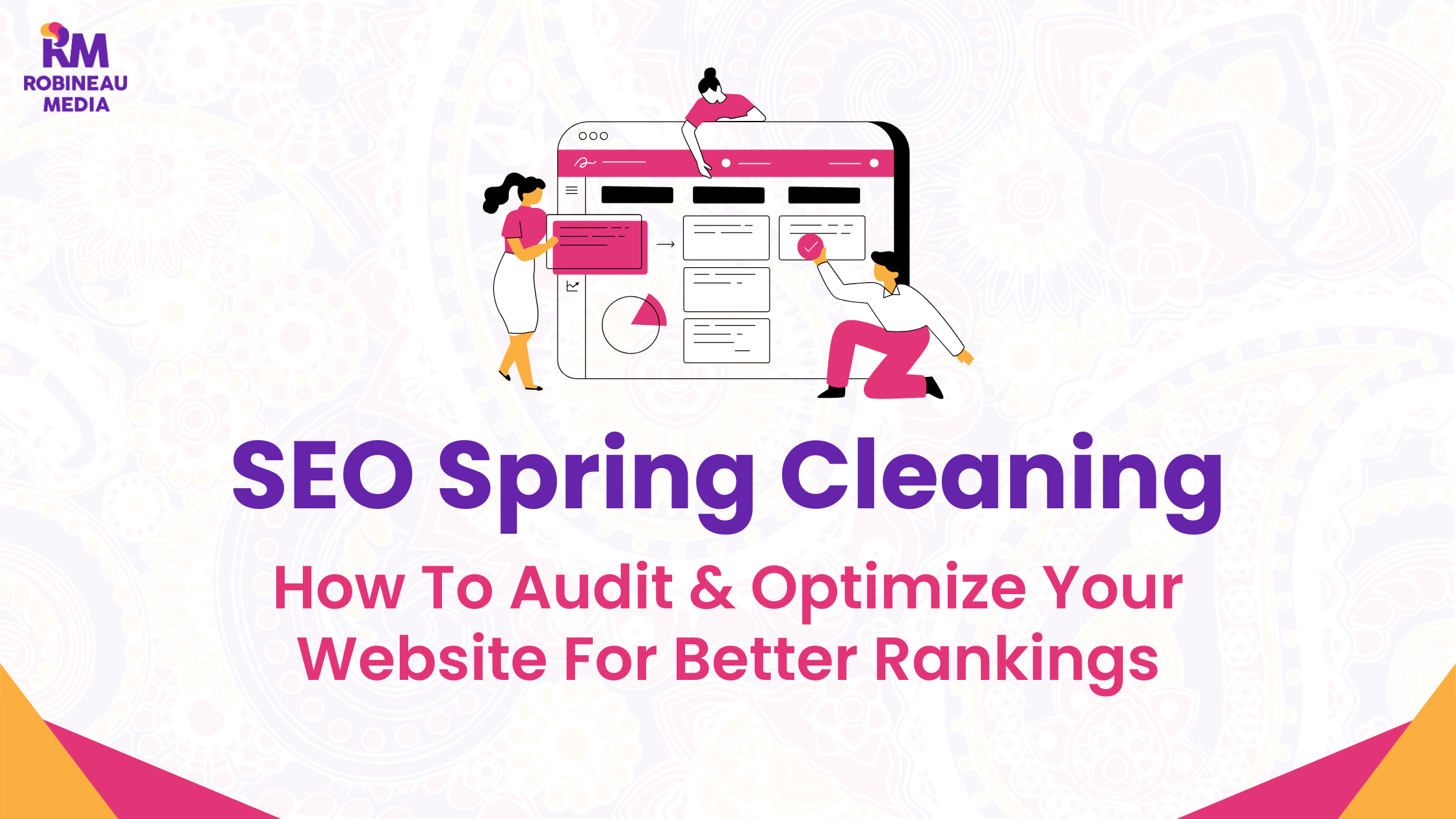As the flowers bloom and the weather warms up, spring is the perfect season to give your website a much-needed refresh. Over time, your site can become cluttered with outdated content, broken links, slow-loading pages, and overlooked SEO issues that hurt your visibility in search engine results. Just as a clean, organized home creates peace of mind, a well-optimized website sets the foundation for improved user experience, stronger rankings, and better business results.
Think about it - your website is often the first impression potential customers get of your business. If it’s outdated, hard to navigate, or buried on the fifth page of search results, you’re missing out on valuable opportunities. Search engine algorithms are constantly evolving, and what worked for SEO six months ago may no longer be relevant today.
SEO spring cleaning is your opportunity to tidy up technical, content, and structural elements of your site. It’s about taking a step back, evaluating what’s working (and what’s not), and optimizing every aspect of your site to align with your goals.
Ready to breathe new life into your digital presence? Here’s a step-by-step guide to spring cleaning your SEO for better rankings and results.
Perform a Comprehensive SEO Audit
Start with a full review of your site’s health. Use tools like Google Search Console, Google Analytics, and SEO auditing platforms to evaluate key performance indicators. Look for crawl errors, traffic drops, mobile usability issues, and on-page SEO weaknesses. These insights will help you focus your efforts where they matter most.
Update or Remove Outdated Content
Outdated content can drag your site down. Review your blogs, landing pages, and product listings to identify information that’s no longer accurate or relevant. You can either:
- Update the content to reflect current trends or data
- Consolidate multiple thin articles into one valuable resource
- Or remove low-performing pages that add no value
Google rewards websites that keep their content fresh and useful - so don’t let stale pages hurt your performance.
Optimize On-Page Elements
On-page SEO is all about the elements you can control directly:
- Craft clear, keyword-rich title tags and meta descriptions
- Use header tags to structure your content
- Add alt text to images for accessibility and SEO value
- Make sure your content answers search intent and includes relevant keywords naturally
Improve Site Speed and Mobile Responsiveness
Speed and mobile friendliness are major ranking factors. Use tools like Google PageSpeed Insights or GTmetrix to identify what’s slowing your site down. Common culprits include uncompressed images, excessive JavaScript, and poor hosting. Address these issues by:
- Compressing images and enabling lazy loading
- Leveraging browser caching
- Optimizing your code and scripts
And don’t forget - more than half of web traffic comes from mobile devices, so your site needs to look and function flawlessly on all screen sizes.
Fix Broken Links and Redirects
Broken internal and external links frustrate users and signal to search engines that your site isn’t well-maintained. Use a crawler or link checker to identify:
- 404 errors
- Redirect chains
- Outdated URLs
Once you find them, fix or update the links. Not only does this help maintain your site’s authority, but it also improves the user experience.
Enhance Internal Linking Structure
An intentional internal linking strategy keeps users engaged and helps distribute link equity throughout your site. Make sure every important page is easily reachable, and link related pages together using relevant anchor text. This helps search engines understand the hierarchy and relevance of your content.
Analyze Performance and Monitor Progress
Once you’ve made your updates, the work isn’t done. Regularly monitor your site using your SEO tools. Watch for:
- Increases in organic traffic
- Improvements in keyword rankings
- Lower bounce rates and higher session durations
SEO is an ongoing process - keeping your site clean, optimized, and aligned with user expectations takes consistent effort.
Your website is one of your most important digital assets. Letting it grow stale or neglected can cost you in traffic, leads, and revenue. Just like any good spring cleaning, a solid SEO audit and optimization can breathe new life into your site - and set you up for long-term success.
Contact us today to schedule your custom SEO audit and take the first step toward a smarter, faster, and more powerful website.


